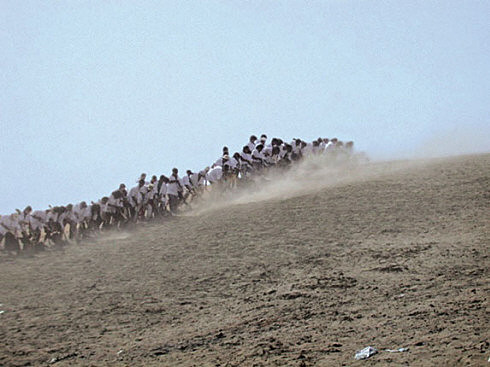
The principle that inspired When Faith Moves Mountains was “maximum effort, minimal result”. The artist invited five hundred volunteers to gather at a sand dune on the outskirts of Lima, Peru, and shovelled together, thereby displacing the dune by about 4 inches from its original location. Alÿs developed the idea after first visiting Lima in October 2000.
Alÿs explained, “This was during the last months of the Fujimori dictatorship. Lima was in turmoil with clashes on the streets, obvious social tension and an emerging movement of resistance. This was a desperate situation calling for an epic response: staging a social allegory to fit the circumstances seemed more appropriate than engaging in a sculptural exercise.” The work depicts a vast disproportion between an effort and its effect, and is a metaphor for the Peruvian society in which minimal changes were achieved through massive collective efforts. Participants gave their time for free, which contested conservative economic principles of production.
The action itself, as documented in photographs and film, is rather spectacular, but in the end the “social allegory” dominates the work’s clear formal presence. The action was completely transient. The next day, no one could spot the displacement of the sand dune. Like most of his work, when faith moves mountains continues beyond the duration of the action itself, through stories and images spread from it.

